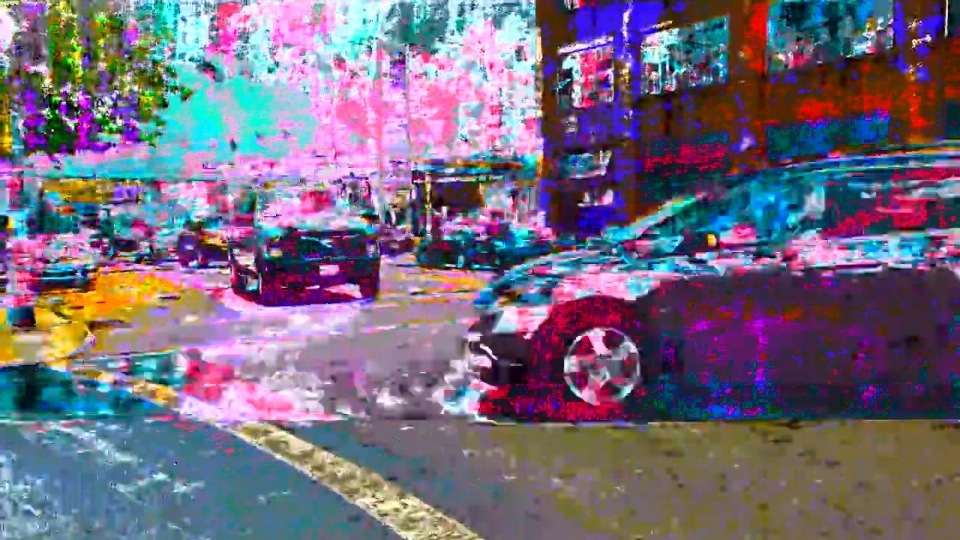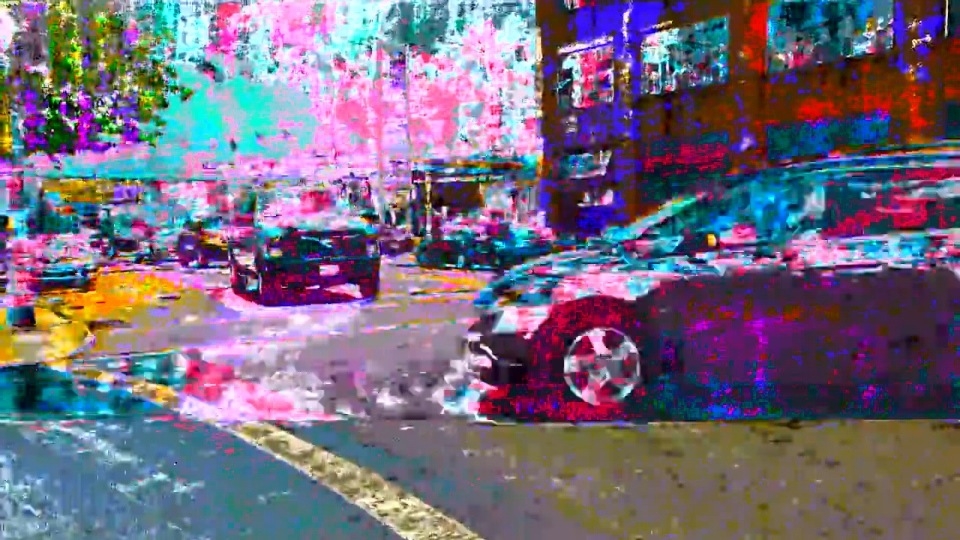
 Data Bending
Data Bending
Here's another chance to read Peter Haas' article on how by doing despicable things to your video data, you can get wonderful results!
What is Data Bending?
There is something beautiful about the imperfection of recording mediums. For many years artists experimented with these strange, yet oddly hypnotic, side effects of image and sound recording.
With film, grain and light leaks are the most noticeable (or at least the most popular) artifacts. What was once the bane of a cinematographer’s existence and considered the sign of mistakes has now found its way into endless highly priced plug-in and effects packages and has become ubiquitous with music and sport videos. Despite being slightly less difficult to ruin, video had it’s own unique looks. Look no further than any number of modern horror films to see how signal rolls, crawls, scan lines, and the classic white-noise “snow” has become its own aesthetic.
Databending is the blanket term for the various methods of manipulating your digital media files at the core level to create interesting and unpredictable artifacts and visual effects.
Here's an example that blends a few of the most popular methods of databending:
The resulting footage could easily be a strange video interference from outer-space, a distorted security camera footage, or beautiful video art.
Don’t worry – it’s a lot easier than it looks.
Learning how to apply these sorts of effects, and why they work, is really educational. You get to learn a little about the make up your digital files and develop a little more respect for the technology behind them.
Equally important, it's really fun to experiment! There is a fascinating aesthetic quality to "bending" these images making it useful for a number of applications such as creating unique visual effects for your film to just plan art for art’s sake. Who knows, this glitch/pixel look but be the retro-image degrading filter of a future generation of Instagramers!
Why it Works
Databending works on the same principle as say, adding interesting chemicals to your photo-bath. You go into the guts of a file and start messing around with how that information is presented in a random manner.
You’re probably thinking “what, mess around with my data files?! Won’t that destroy them?” The short answer is yes! Databending your files is a destructive process so always create copies of files before you start modifying them. Our goal here is to not break the files ability to play back, but it sometimes happens and it’s good always be able to return to the originals.
So how exactly do we modify but not break the media? This is a massive generalization but for the nature of what we’re talking about, a data file is made up of three primary parts: Header, the value data, and an end of file (EOF) marker.
The Header File and End of file marker are found at the beginning and end of the file respectively. They tell the computer how to interpret the data that makes up the body of the file and when that file ends. The part of the file you want to be editing is essentially everything in between. These are the Matrix-looking 1’s and 0’s that make up the guts of your file and define how the media is going to play back.
The Basics
When you normally open a file on your computer, it attempts to associate it with a program designed to read those files in away that is recognizable but you, the human. When you open a Final Cut Pro project file (yourgreatmovie.fcp) the computer recognizes the “.fcp” and knows to open that file in Final Cut so it displays correctly. The same thing happens when you double click a “.doc” file and Office opens.
The secret to databending is to open your files in an editor that ignores the format of the file and shows you the raw data, meaning the header, contents and EOF marker as they are written in the file. Once you have your file opened you can make random changes to any part of it except for the header or EOF marker. We still want the computer to recognize our files as media, and messing around with the head or tail of the file could result in making it completely useless.
The exact details of how to databend go beyond the scope of this article but check out the resources list below for some great tutorials!
Once you’ve completed editing the raw data file, you export the raw information back into the original media’s format. When you open that media file up in a viewer it should have some fabulous digital artifacts!
The tools Of Data Bending
All of the tools you would need for databending are completely free. Audacity and GIMP are two basic tools for importing raw data files and manipulating them. Court 13 provides a “Data Moshing ToolKit” which gives you a ton of tools.
Learning how to Data Bend
There are a number of great tutorials out there for learning the basics of databending,
The most informative link I could find on different “data-bending” concepts was here. I definitely recommend you check it out! It covers both audio and image bending.
I have also included some videos below.
Videos on how to Data Bend
A long, slightly pretentious, but very educational series about bending compressed data formats for some really fun and interesting results:
A great quick intro for doing simple glitch art using Audacity:
The past methods were mostly for modifying visual images with an audio editor. Here is a tutorial for doing the reverse - adding “glitch” elements to your audio files:
Go make something fun!
Tags: Post & VFX


Comments